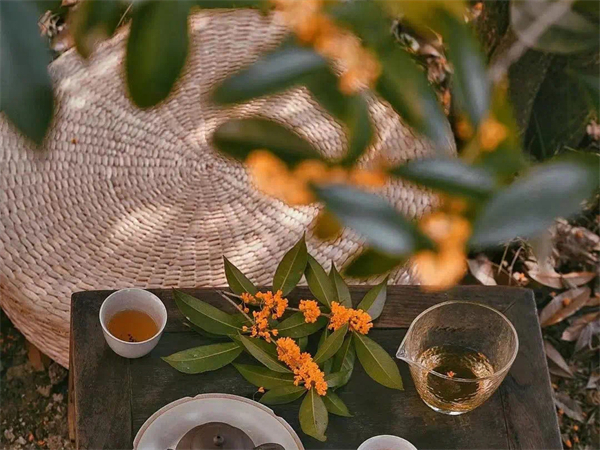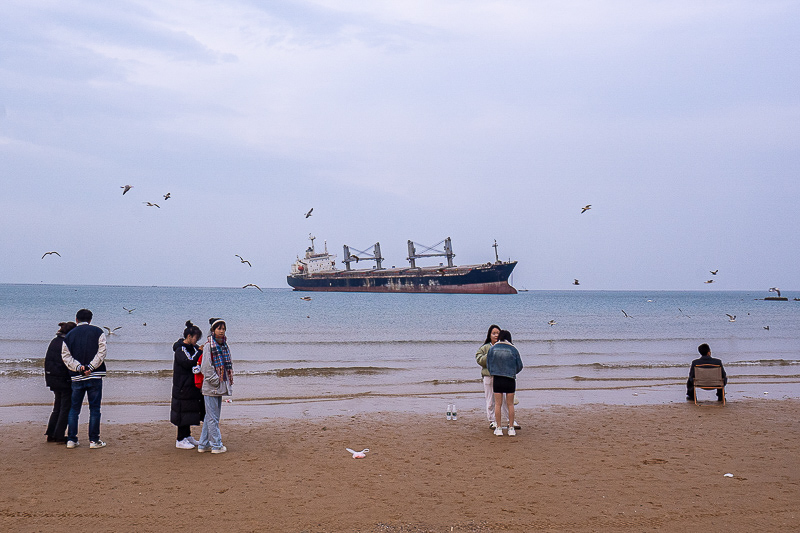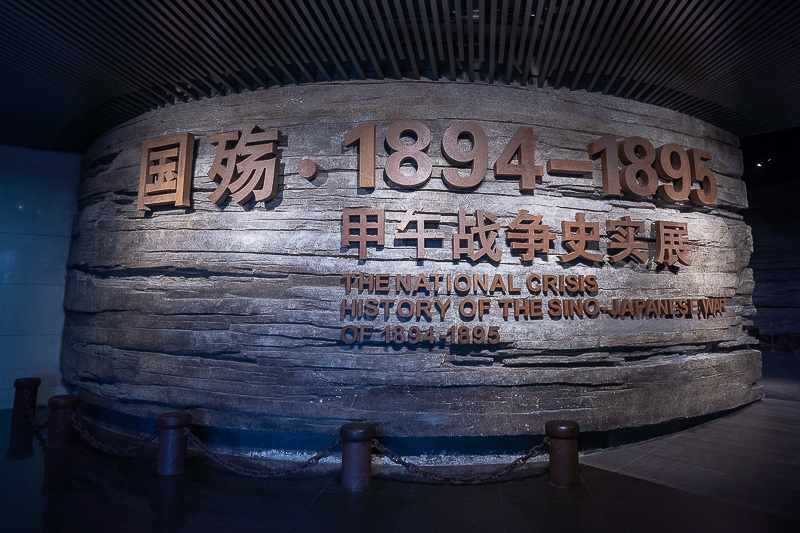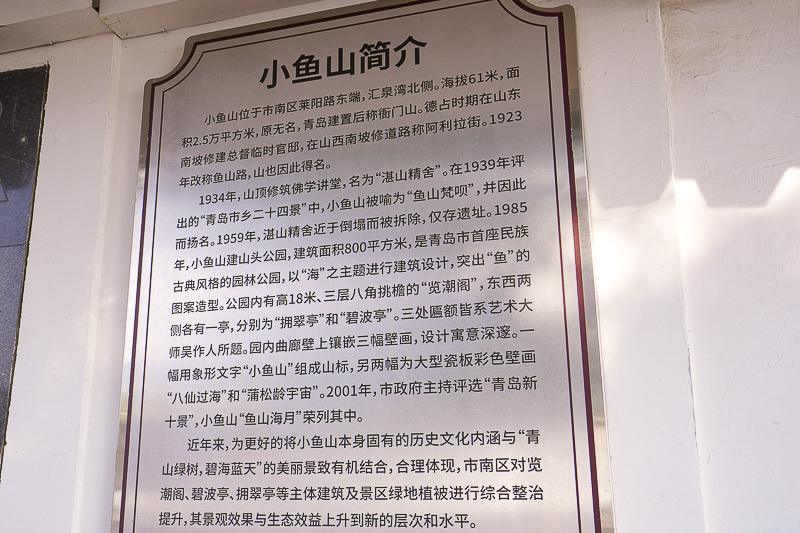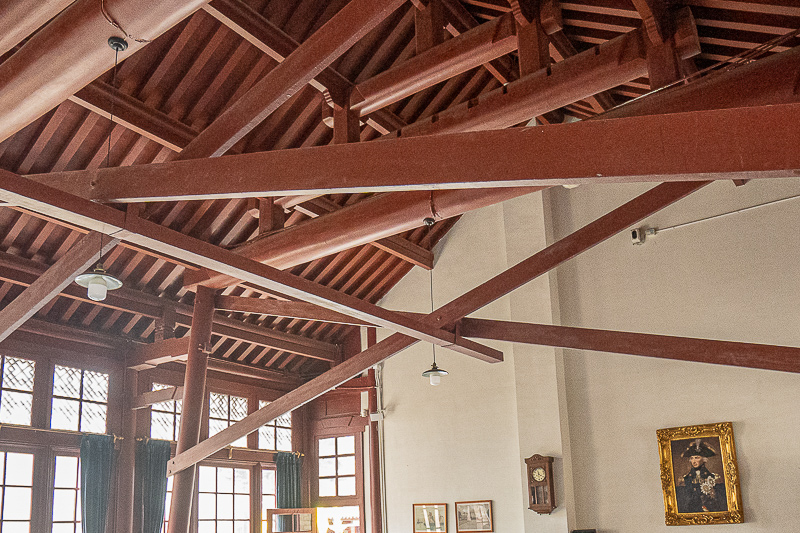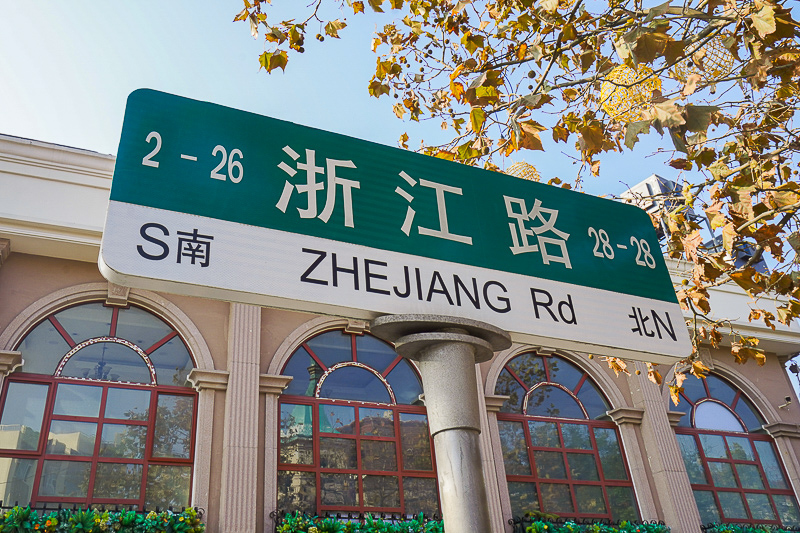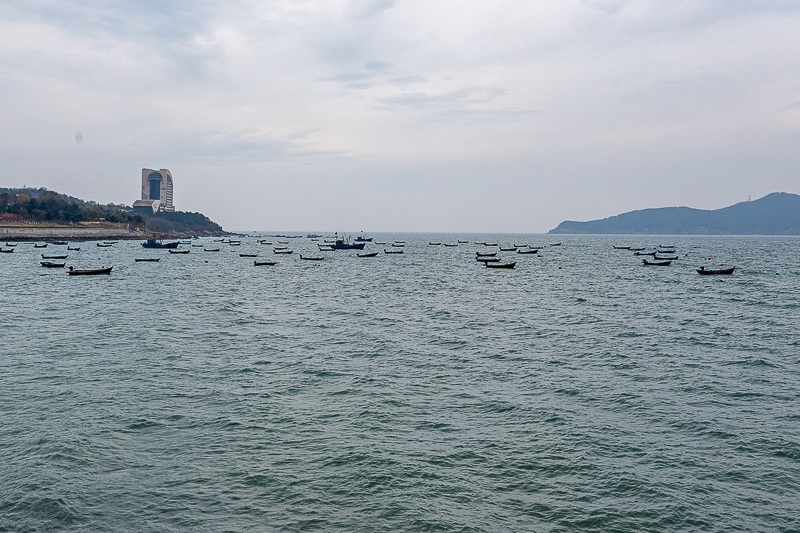本文目录
一、西安大雁塔的英文导游解说词是什么
1、大雁塔是楼阁式砖塔,采用磨砖对缝(意思是将砖的 6个面磨光,用石灰、三合土、米浆粘连)的砌垒技术。大雁塔的特点是:砖结构体现出木结构的斗拱风格;砖墙上显出“棱柱”来,可以明显分出墙壁开间。这些都是中国特有的传统建筑艺术形式。大雁塔塔身高大,结构坚固,外观庄严、朴实、大方,充分体现了我国古代劳动人民的智慧和才能。
2、The Heavenly King and the Buddha in line drawings appear on the door frames and horizontal bars on the four sides of the pagoda's base. They are vividly portrayed in smooth lines and show a high level of workmanship. They serve as an important source of material for the study of paintings and sculptures of the Tang Dynasty. Out of these artistic works, the one on the horizontal bar of the west door is the most precious. It is a rare piece of art now used for the study of the Tang architecture.
3、塔底层四周门楣上雕刻有天王及佛像等线刻画,这些画刻工高超,形象生动,线条流畅,是研究唐代绘画及雕刻的重要资料,其中尤以西门楣的线刻画最为珍贵,是研究唐代建筑的珍贵艺术品。大雁塔的得名还有一段有趣的故事呢!传说玄奘在印度取经时曾住在一座大乘佛寺内。印度佛教分大乘、小乘两派。大乘吃素,小乘吃荦。玄奘住的这座寺院附近有一座小乘寺。一天该寺的僧人因吃不到肉而发愁,那天正好是菩萨布施日。一个和尚仰天叹道:“大慈大悲的菩萨一定不会忘记今天是什么日子!”他正说着,一群大雁飞来,头雁坠地而死。僧侣们个个惊愕万分,以为菩萨显灵,送来大雁以解饥苦。从此,全寺和尚不再吃肉并改信大乘佛教。他们还在大雁落地处修建了一座塔,取名“雁塔”。大雁塔就是玄奘依照印度那座“雁塔”的形式设计建造的。为了颂扬佛教,纪念玄奘,后来人们就称慈恩寺塔为“雁塔”。半个世纪后,荐福寺塔修成了。两塔遥遥相对,风采各异。因荐福寺塔比雁塔小,人们就将这座塔叫大雁塔,而将荐福寺塔改叫小雁塔了。
4、There is an interesting story about the name of the pagoda. It is said that Master Xuan Zang once stayed in a Mahayana temple in India. In fact, there are two major sects of Buddhism in India, the Mahayana and the Hinayana. The Mahayana believers are vegetarians while those of the Hinayana are non-vegetarians. Near the temple where he stayed, there was a Hinayana temple. One day, a monk was just worried about the shortage of meat in the temple. But it happened to be the General Alms Day of the Buddha, another monk looked up at the sky and sighed,“Our beloved Buddha, the Great and Merciful, will not forget what day it is today!” At these words, a flock of wild geese flew over the temple. The head goose dropped dead to the ground. The monks were all puzzled by this, and they concluded that this must be the result of the Buddha's spirit at work: to provide them with the wild goose. Ever since then, the monks of the temple became vegetarians and began to believe in Mahayana Buddhism. They also set up a pagoda where the wild goose dropped dead, and called it the Wild Goose Pagoda. The Wild Goose Pagoda that greets us today was acturally modeled after its Indian prototype. It was given the same name in memory of Xuan Zang and in praise of Buddhism. After about half a century, the pagoda at the Jianfu Temple was built. The two pagodas face each other over a distance, but assume different styles. Since the one in the Jianfu Temple is smaller than the Wild Goose Pagoda, it is often called the Small Wild Goose Pagoda.
二、西安钟鼓楼城墙英文导游词
导游词,是导游人员引导游客观光游览时的讲解词,是导游员同游客交流思想,向游客传播文化知识的工具,也是应用写作研究的`文体之一。特点是口语化,还具有知识性、文学性、礼节性等特点。以下是小篇为大家整理的西安钟鼓楼城墙英文导游词。
The Bell Tower Drum Tower and the City Well in Xi’an
Good morning Ladies and Gentlemen:
Today we will have three places to visit—the Bell Tower the Drum Tower and the City Well. First we come to the Bell Tower.
The Bell Tower, a classical building with carved beams and painted rafters, has been served as the symbol of Xi’an. It stands in the center of the downtown area where the north street, the south street, the west street and the east street meet. And the tower house a huge bell which in ancient times was use to strike the time every morning. This is how the tower got its name. now it is an important historical monument in shaanxi Province.
The Bell tower was first built in Ying Xiang temple in 1384 during the Ming dynasty. It was moved to its present site in 1582 as a result of the city‘s expansion program.
Ladies and gentlemen, There is a story about the Bell Tower. It’s said that the first emperor of Ming dynasty, Zhu yuanzhang, he was born in a poor family. Both his parent died when he was young, and he had to live a hard life. Later, he went to a temple to become a monk. When he ascended the throne, he was afraid of being deposed by someone of“real dragon”. Therefore, he gave orders to build bell tower all over the county to repress the“dragon spirits”. Xi’an has been the imperial capital city since ancient times. So the“dragon spirits” must be very strong here. That’s why the bell tower in Xi’an was not only built earlier, but also bigger than the other ones in the country. The base of the tower is 1,337.4 square meters in size, 8.6 meters high and 35.5 meters wide. It was laid with blue bricks all over. The whole building is 36 meters above ground. It is a brick-and–wood structure. The eaves are supported by colored“dou gong” a traditional structural system in which brackets are used to join columns and crossbeams, the use of dou gong made the whole building firm and beautiful.
Well, next we will visit the Drum Tower nearly.
The Drum Tower stands 500 meters to the northwest of the Bell Tower. It was built in 1380. There used to be a huge drum in the tower, which told the time at dark, and that is how the tower got its present name. Besides marking the time, the drum was also used to give warnings to people in times of war. The base of The Drum Tower is 1,924 square meters in size, and 34 meters in height. It was built with blue bricks. The Drum Tower has a rectangular shape and shows tier and the outside eaves are decorated with networks of wood arches.
At last, we will visit the famous city wall of Xi’an. The most complete and the best preserved city wall in china.
The city wall of Xi’an is an extension of the prior Tang dynasty structure. It was stared in 1370 and finished in 1378 and has a rectangular–shaped construction. It is over 4 kilometers from the east to west and about 3 kilometers from the north to south. And the total length is 13.7 kilometers. It stands 12 meters high, 12-14 meters wide across the top and 15-18 meters thick at the button. On the top of the city wall, there is a rampart every 120 meters, which extends out from the main wall. The top of the rampart is at the same level as the top of the wall. The ramparts were built to allow soldiers to see those enemies who would try to climb up the wall. The distance between every two ramparts is just within the range of arrow shot from either side. This allowed soldiers to protect the entire wall without exposing themselves to the enemy. There are altogether 98 of them on the city wall and each has a sentry building on top of it.
There are four main gates of the city wall-one on each side-named the east gate, the west gate, south gate and north gate. The four gates of the city wall were the only way to go into and out of town. In Xi’an, each of the four gates consists of three gate towers. The main gate tower is called ZhengLou which is located on top of the main part of the city wall. It is the inner one and is also the main entrance to the city. Zha lou is the gate tower which a suspension bridge and located outside of the city wall. It’s used to lift and lower the suspension bridge. Jian lou is the arrow tower and located in between the Zhenglou and Zhaloutowers. There are square windows in the front and on the two sides to shoot arrows. Jianlou and Zhenglou are connected by walls and the encircled area is called Wongcheng in which soldiers could be stationed. From Wongcheng, there are also horse passages leading to the top of the wall. There are altogether eleven horse passages around the city.
A watch tower is located on each of the four corners of the wall. The one at the southwestern corner is round, probably after the model of the imperial city wall of the Tang dynasty. But the other three are square and are higher and larger than the sentry building on the ramparts. This shows the strategic importance of the corners of the city wall.
All right, we have finished visiting the famous city wall of Xi’an. Thank you.
三、西安旅游攻略2017
西安,在古代是叫长安。还记得的《华胥引》里面“一世安”的这个故事,超级喜欢长安这个地方。“一世安”,一世长安。这样的地方一辈子真的不够呆。
DAY 1咸阳机场-汉唐驿客栈-钟楼-书院门-西安古城墙
DAY 2华山跟团一日游(西上北下)-回民街
DAY 3大雁塔-天下第一面-陕西历史博物馆-曲江公园-长安大牌档(小寨赛格国际购物中心)-大雁塔音乐喷泉
DAY4兵马俑+华清池一日游-回民街
其中第3天的行程其实本来只是安排了大雁塔和博物馆,但是实际上要是大家可以早起,大雁塔和博物馆大概半天就可以搞定了,然后我们比较慢加上博物馆里面有的小插曲出来的时候已经4点15了,其实要是再早15分钟的话赶去青龙寺绰绰有余,3月4月是青龙寺的樱花季,我们因为来不及所以就去曲江公园玩了。
杭州市区-机场滴滴费用 25(我们两个人加了15的小费)西安市区-机场滴滴费用 25
一个人花费 310+600+25+25+275+550+650+550=3185
一早6点45的飞机,于是乎一大早兵荒马乱的赶去萧山机场,还好有滴滴顺风车,预约了5点的顺风车,司机是个机场工作人员,很准时的带上了我们,不过建议要是一大早的飞机可以再早点,我们时间卡的刚刚好,到机场办登机牌托运行李的时候已经听到6点30的飞机的乘客请到值班主任柜台办理登记牌,差点我们也享受VIP待遇了。
西安机场很大,下飞机以后就跟着人流走,蛮长一段路的,到行李转盘取行李,然后记得跟着人流去做大巴。
西安机场大巴信息查询
西安的机场大巴很像客运站(不过我是国内到达 2号还是3号航站楼的机场大巴好像不太一样),在一个大厅里面,有一个专门买票的柜台,凭身份证买好票以后就去左手边坐车,有一个个站牌的,记得分清左边右边分别是去哪里不要排错了队。另外车票钱都是30块钱,其实可以随便做去哪里的,要是看到乘务员在问去哪里还有没有人,要是赶时间可以确认下离目的地是否方便然后选择坐上的。因为不要以为一辆大巴都能最少,我们做的大巴应该先去另外一个航站楼接人了然后再来我们这里的。
陇海大酒店维景国际酒店火车站这几个其实都离钟楼很近的,到那里下车打的就好了。
另外如果你们确定了要在西安跟团游的话,强烈建议大家可以在到达西安之前订了一日游,然后就有送接机服务直接把你送到酒店的,我们因为天气不好,所以都是提前一天才定一日游也就没有享受到这个服务,而且不提供送机服务的。ps机场也有很多现场推销一日游的,都有赠送一日游,我们没有定所以不太清楚。
小老三热米皮(西一路店)推荐他家的肉夹馍和凉皮,觉得比在回民街的都好吃,以至于我回家那天打包了好多肉夹馍带回家
回民街:有个大家都推荐的粉蒸肉,有点麻麻的味道,小伙伴不爱吃,但是我吃的好开心
酸梅汤,酸奶,这个没什么特色,值得一试
羊肉泡馍,还是在自己住的附近吃吧,我们在回民街吃的,又贵又不好吃,而且还太多一样名字的店了,傻傻分不清。
回民街实在太人山人海,去感受下就好,然后要吃当地美食还是推荐吃自己住的附近了,毕竟那些店是有口皆碑才能生存那么久。
长安大牌档这个是类似杭州新白鹿外婆家的地方吧。就是生意好太多,但是真心很有特色,而且吃的很开心,等位的时候门口有各种小游戏给你玩,还是不错的。值得一去,不过记得早点去排队。
天下第一面,去大雁塔的时候可以去吃下,顺路的,等位也不用,感受下,那比人都高的面条。味道嘛,天下第一面还是那个油泼面好吃点。
德发长饺子宴,用了团购点了一人份的饺子宴,然后听了服务员的推荐吃了油泼饺子。饺子好吃说不上,但是好玩,各种各样的味道,然后最后是靠油泼饺子填饱了肚子。不过,生意颇冷清,也有可能因为我们去的找,然后可以看到钟楼,位置很好,还是值得一去。
魏家凉皮感觉还是我们附近的凉皮好吃。
胡辣汤居然有各种各样的味道然后冬天or春天来一碗,好暖身子
然后还有菠菜面串串什么好多都没有吃,我下回还要去吃吃吃
啪啪啪打脸,我最后还是放照片了。为什么我照片传上来就那么大!!!
华山和兵马俑都是跟团一日游,感觉西安这方面挺成熟的,然后都蛮早回到市区了,我们住钟鼓楼,把我们送到也就5点这样。我们是选的独立成团的,全程有导游而且都是一个团,感觉蛮不错,回了市区还能去其他地方玩一下。特别可以把去城墙安排在回来早的那天,这样可以既看到夜景又欣赏了白天的雄伟。
城墙,大家晚点上去,不要像我们在上面傻傻等了半天才等到天黑。
碑林什么景点,额,我这种没什么文学历史素养的,看看就好,很快就结束了。
大雁塔的音乐喷泉额看看就好,不看也不吃亏,现在音乐喷泉很多地方都有了,所以不值得再次回去看喷泉。
然后要是时间多可以安排去别的景点,或者吃吃吃,对,多留点时间吃吃吃。
写到最后发现没有推荐住的地方汉唐驿国际青年旅舍
唯一不好的地方既是确定也是优点:整个旅舍都是外国人,我们最后一天走的时候才看到几个中国人。尴尬脸。厦门包车返工
大推荐这个旅舍,看起来离钟鼓楼不近,但是超级方便,去哪里都方便,而且除了第一次不好找,接下来都很好找。
另外最关键的是附近吃的很多!!!!有凉皮肉夹馍串串烧烤胡辣汤反正基本吃的都有了!!!!可以一天3个不带重样的。
我那时候就根据这张图安排的行程,这应该是哪个去西安的小伙伴的游记里面盗图的,感谢好心人
实行淡、旺季浮动价格,“一票制”管理。门票价格为:旺季150元/人次(3月1日-11月底);淡季120元/人次(12月1日-次年2月底)。在校学生和特定人群可以享受门票优惠的政策。观众往返秦始皇兵马俑博物馆和秦始皇帝陵两景区参观,可免费乘坐旅游专车。
3月16日—11月15日 8:30—18:00(17:00停止售票)
11月16日—次年3月15日 8:30—17:30(16:30停止售票)
自驾线路:从西安自驾车前往华清宫,可沿西临高速公路前行,只需30分钟即可到达华清宫;
公交线路:从火车站(东广场)乘坐306路公交在“华清池”站下车即到
旺季全价150元,淡季全价120元,长恨歌演出费用218-988
在火车站东广场解放饭店门前乘坐306路公交车西安到秦兵马俑的旅游专线汽车。发车时间7:00-18:00,间隔10分钟。到【骊山国家森林公园】站下车,票价6元,约45分钟到达。
1、在火车站东广场解放饭店门前乘坐高速915路中巴车,发车时间每趟间隔5分钟,车票6元,乘车时间约为45分钟,至【骊山国家森林公园】站下车。
2、在火车站东广场解放饭店门前乘坐低速914路中巴车,发车时间每趟间隔5分钟,车票5元,乘车时间约为1小时,至【骊山国家森林公园】站下车。
3、由西安火车站乘西安-渭南途经临潼客运中巴,可至【骊山国家森林公园】站下车。
在西安火车站可以租车到骊山,租车费用约为180元/单程,但需要注意的是,上车时应跟司机说清楚是前往骊山景区,而不要被拉到其它人造景点,耽误到骊山的游览。
从西安自驾车前往骊山,可沿西临高速公路前行,行程约24公里(经过灞桥收费站,路桥费用10元/辆)。道路状况良好,在非交通高峰时期,车辆较少,车速可达60公里/小时,只需30分钟即可到达骊山。
骊山与华清池两个景点已合并为华清宫景区,旺季门票150元,淡季(12月1日-次年2月底)120元。
1、乘坐5、24、27、游8路等公交车在“翠华路(陕西历史博物馆)”站下车即到
2、地铁2号线至小寨站,出站后向东步行即到
免费开放实行“免费不免票”,每天限量限时发放免费参观券4000张(每日14时前限2500张,下午限1500张),发完为止。散客(凭身份证或有效证件)参观一人限领一票,当日有效,过期作废。珍宝馆费用20元/每人;唐代壁画珍品馆150元/人。
A、人工讲解:基本陈列中文讲解100元,英文或日文讲解150元;大唐遗宝专题展中文讲解50元,英文或日文讲解100元;唐代壁画珍品馆中文讲解50元。一名讲解员最多可带领10名游客参观。可以现拼团进入。缺点是人工讲解随机而定,能力素质有别;
B、自动语音导览机:有中文、英文、法文、日文、韩文语言讲解;其中中文有中文学生版,这样可以方便小朋友收听。收费标准:押金100元,基本陈列租金30元/台,基本陈列和大唐遗宝专题展租金30元/台。缺点是普遍反应速度快,人多嘈杂时有听不清的现象
每周二至周日开放,开馆期间,上午发票截止到午休时间,下午13:00以后继续发票;
冬季(11月15日-次年3月15日)9:00-17:30(16:00停止发票),夏季(3月16日-11月14日)8:30-18:00(16:30停止发票);
周一全天闭馆整修(国家法定节假日除外)
乘坐21路、521路等多趟公交车前往,到大雁塔站下车
免费,音乐喷泉(免费)钟鼓楼夜景(不上楼免费)
全天开放(音乐喷泉表演时间:周一-周五:12:00、21:00(周二喷泉水舞设备例行检修,白天停开);
周六-周日:12:00、14:00、16:00、18:00、21:00;
冬季(11月-次年1月)喷泉表演晚间为20:30;
乘坐3、6路等公交在“鼓楼”站下车。或乘坐地铁2号线在“钟楼”站下车
旺季钟楼敲钟10元3次,敲鼓另收5元
4月1日-10月25日:8:30-22:00;10月26日-次年3月31日:8:30-18:00。
##城墙上的租赁单人自行车40元/100分钟,双人自行车80元/100分钟;三人自行车60元/100分钟。
西安城墙有19个登城门点开放,可就近登城。
东线3个:东门、中山门、城墙东北角;
西线4个:玉祥门、西门(2个)、北马道西南角;
南线7个:小南门、南门(城内正门、月城吊桥)、文昌门(2个)、和平门、建国门;
北线5个:小北门、北门(2个)、尚德门(位于火车站西南侧,城内环城路1个、城外有云梯可登)
用时参考:古城墙一周全长约14.7公里。骑行一周约需80分钟左右抖音厦门导游张。
机场巴士乘坐指南: G边上有公交车 D是有地铁 Y是有点远,我就查了几个能到钟鼓楼的
2号航站楼—请您在T2航站楼1楼(到达层)旅客服务中心购票
3号航站楼—请您在T3航站楼综合交通枢纽(GTC)一层购票
2号航站楼—请您在T2航站楼1楼(到达层)外部乘车
3号航站楼—请您在T3航站楼综合交通枢纽(GTC)一层乘车
##西稍门空港商务酒店线 G-------------推荐
**发车间隔约20分钟运行时间约70分钟
**机场出发首班:5:00~末班:次日2:00市区出发首班:6:00~末班:末航班到达
**线路西稍门空港商务酒店—城西汽车客运站—咸阳机场
备注:城西汽车客运站至机场运行时段:7:00-18:30;机场至城西汽车客运站运行时段:6:00-21:30,经停城西汽车客运站**发车间隔约40分钟。
**发车间隔约20分钟运行时间约70分钟
**机场出发首班:7:00~末班:20:00市区出发首班:6:00~末班:21:00
**线路高新区志城丽柏酒店—咸阳机场
##西安火车站陇海大酒店线 D------------推荐
**发车间隔约20分钟运行时间约70分钟
**机场出发首班:6:30~末班:次日2:00市区出发首班:5:30~末班:次日1:00
**线路西安火车站陇海大酒店—咸阳机场
**发车间隔约20分钟运行时间约70分钟
**机场出发首班:7:00~末班:22:00市区出发首班:6:00~末班:21:40
**线路南稍门西安宾馆—咸阳机场
**发车间隔约60分钟运行时间约70分钟
**机场出发首班:8:15~末班:20:15市区出发首班:7:15~末班:20:15
**线路小寨东方大酒店—南二环唐城宾馆—咸阳机场
**发车间隔约40分钟运行时间约70分钟
**机场出发首班:8:20~末班:20:20市区出发首班:6:40~末班:20:40
**线路东二环建国饭店—咸阳机场
**发车间隔约20分钟运行时间约40分钟
**机场出发首班:8:00~末班:21:00市区出发首班:8:00~末班:21:00
**发车间隔约30分钟运行时间约70分钟
**机场出发首班:7:00~末班:21:00市区出发首班:7:00~末班:21:30
**线路东大街维景国际大酒店—北二环威尔佳酒店—咸阳机场
**发车间隔约60分钟运行时间约60分钟
**机场出发首班:7:30~末班:19:30市区出发首班:7:30~末班:20:00
**线路城东汽车客运站—咸阳机场
**发车间隔约120分钟运行时间约40分钟
**机场出发首班:8:30~末班:18:30市区出发首班:8:30~末班:18:30
**线路城北汽车客运站—咸阳机场
**发车间隔约30分钟运行时间约90分钟
**机场出发首班:7:30~末班:21:00市区出发首班:7:00~末班:20:30
**线路西北饭店—城南汽车客运站—咸阳机场
**发车间隔约40分钟运行时间约70分钟
**机场出发首班:8:30~末班:18:30市区出发首班:8:30~末班:20:30
**线路长安区希尔顿花园酒店—高新区南中兴和泰酒店—绿地假日酒店—西港商务—咸阳机场
**发车间隔约40分钟运行时间约90分钟
**机场出发首班:8:10~末班:20:50市区出发首班:7:30~末班:20:10
**线路大威斯汀酒店—会展中心曲江华美达酒店—电视塔莱安中心—咸阳机场
**发车间隔约30分钟运行时间约60分钟
**机场出发首班:8:30~末班:22:00市区出发首班:6:30~末班:18:30
**线路彩虹宾馆—民生商厦—咸阳市政府—人民路—咸阳火车站—咸阳机场
**发车间隔约60分钟运行时间约60分钟
**机场出发首班:10:00~末班:21:00市区出发首班:8:00~末班:19:00
**线路咸阳高铁站—华泰小区—烟草公司—七厂十字—玉泉东路—文林路西口—咸阳机场

